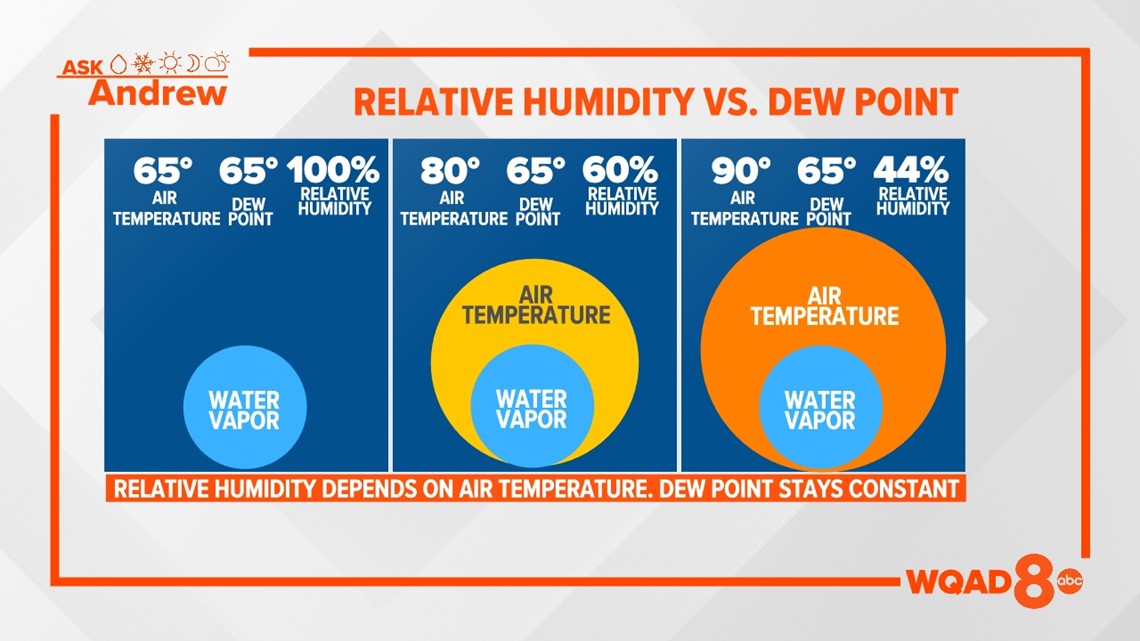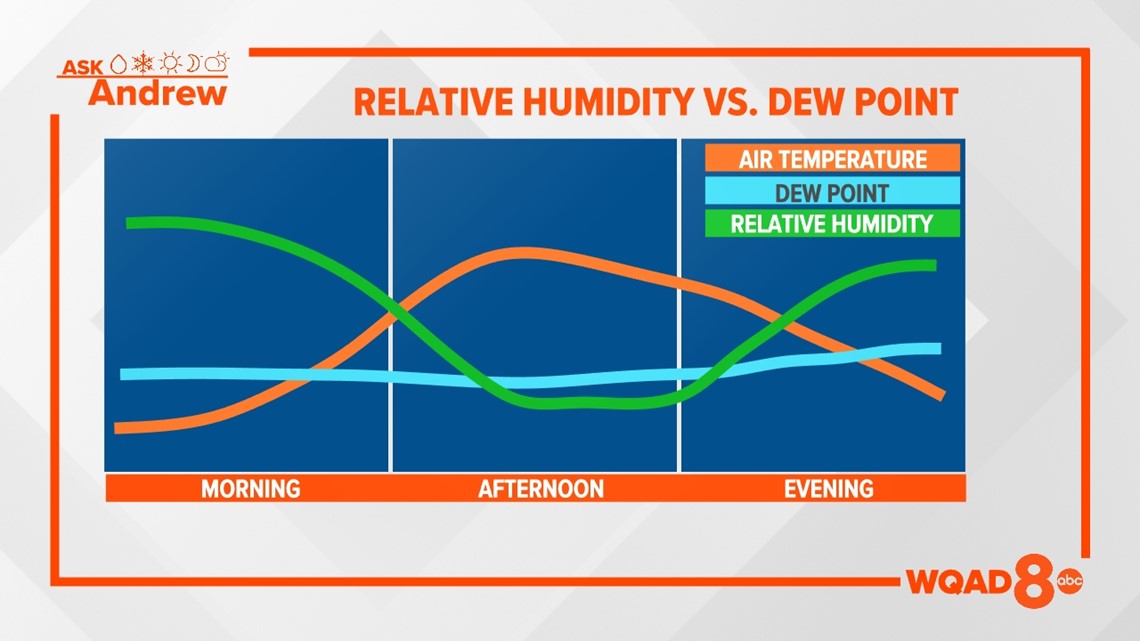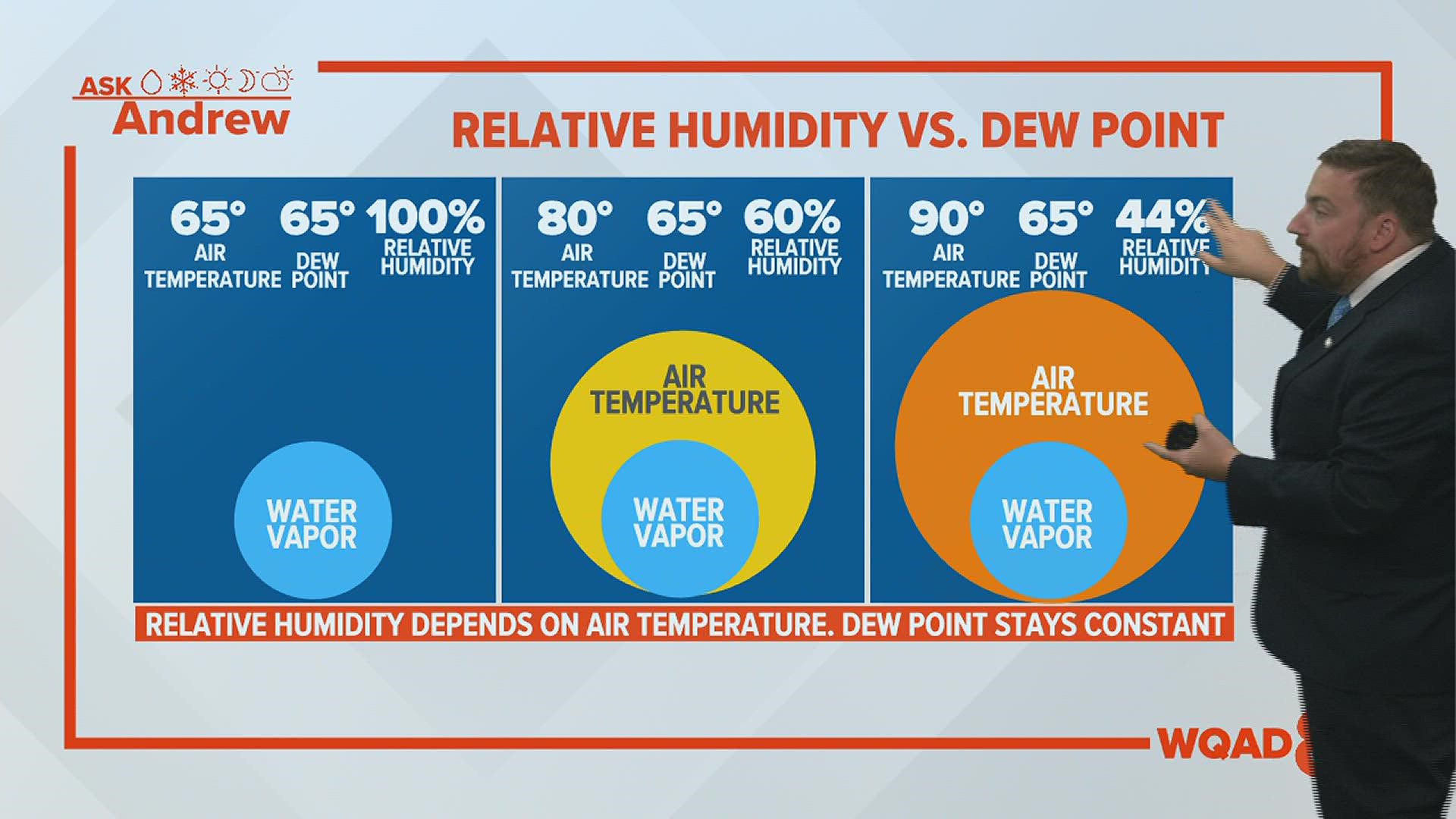MOLINE, Ill. — You hear us talk about it on a fairly regular basis during the summer months. It's not the heat, it's the humidity! So thick, you could slice it with a knife! The air you can wear, today!
Yes, at times the humidity can indeed tell us just how uncomfortable it is outside, however, in many cases, the dew point is going to be a better indicator when it comes to the level of comfort we'll experience outside on a given day. A classic example of why is the topic of this week's Ask Andrew.
How do we have a low dew point but high humidity?
The relative humidity, which is shown by most meteorologists around the globe, tells us the amount of water vapor currently in the air versus the amount of water vapor that can be present in the air at a given temperature.
Sounds confusing, right? Let's break this down even further.


In the example above, we have a dew point temperature that stays constant at 65 degrees. Meanwhile, the air temperature is rising. The relative humidity is calculated based on the distance between the air temperature and the dewpoint temperature. The closer these two numbers are together, the higher the humidity. The further apart, the lower the humidity.
When the air temperature and dew point temperature are equal, we have 100 percent relative humidity. This simply means the air is fully saturated with water vapor. However, you'll also notice that often times when this occurs, it's in the early morning hours when it really doesn't feel "humid" outside.
So, why do we say it's "humid?"
Perhaps the devil is in the details. It's a phrase so widely used that we just might not be able to come up with something else. Would it sound right to say, "Man! It sure is dewy today!"
If you were a meteorologist, "Man! That dew point is high today!" would make perfect sense. But, to the general public, probably not so much. Humidity just seems to make more sense.


Did you know?
The air temperature and humidity are really the only two things that change when compared to the dew point over the course of an entire day. Dew point temperatures typically stay fairly steady, while the air temperature and humidity levels are quite inverse to each other.
Humidity during the day tends to fall, as the air temperature warms more than the dew point temperature. The opposite occurs at night when the humidity rises as the air temperature cools off and reaches a value close to the dew point temperature.
Also...
The dew point temperature is a good indicator of what to expect for your overnight low temperature, especially during the cooler seasons.
Have a question you would like me to answer for an upcoming "Ask Andrew" segment? Submit it, here.
Learn more about humidity vs. dew points from the National Weather Service

